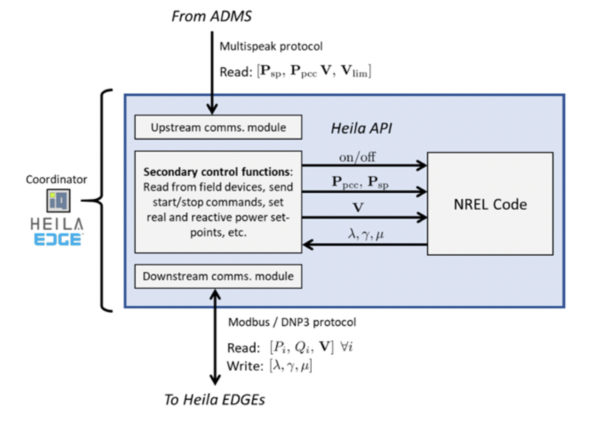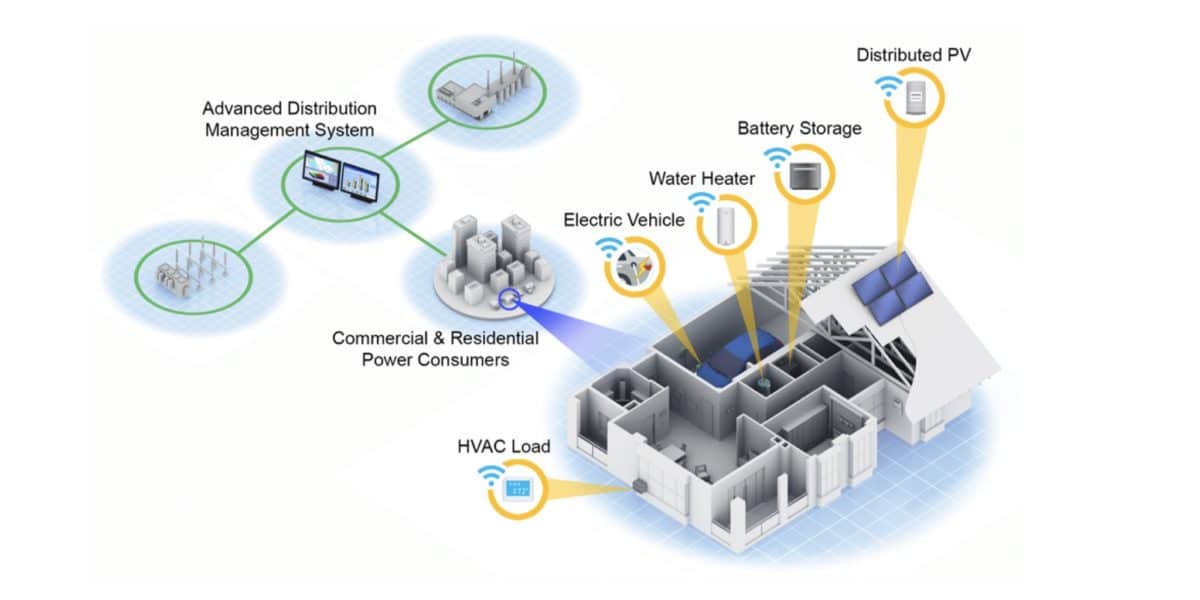Four Colorado homes with solar plus storage are now operating as virtual power plants. In each home, a controller device is managing solar, storage, an electric vehicle charger, and heat pumps for hot water and space heating.
The controller in each home has an embedded algorithm that receives information from the grid on voltage, frequency, and power flows, and uses that information to direct the operation of the five distributed devices. In the near future, price signals will also be sent to the controller to help guide its decision-making, reports Holy Cross Energy, the electric cooperative in northwest Colorado that is field-testing the technology.
Although field testing is still underway, the utility’s President and CEO Bryan J. Hannegan told pv magazine that
… based on the work to date, Holy Cross Energy is very encouraged by the capability of distributed energy resources to provide important grid services that help increase the deployment of renewable energy resources, manage grid variability, and improve the overall resilience of the electric system.”
The project will help Holy Cross Energy (HCE) accommodate the deployment of rooftop solar systems, including newer systems that include storage, and “modulate when a PV system injects power into the grid,” said HCE Research Engineer Chris Bilby, in a pv magazine interview.
The technology being tested will also help HCE advance towards its goal of reaching 70% clean power by 2030, Mr. Bilby said. HCE’s power mix currently includes 37% wind, solar, hydropower and biomass.
HCE’s distributed control capabilities may become a talking point in a debate that’s brewing over the best architecture for controlling distributed energy resources—centralized or distributed. Either way, the ability to control distributed solar and storage is enabling increased levels of these resources on the grid.
Hardware, software, and communications
Holy Cross Energy provided the following diagram to show the flow of information into and out of each household’s controller:

As indicated at the top of the diagram, the utility’s advanced distribution management system uses the Multispeak protocol to send data to the upstream communications module of the Heila EDGE controller, made by Heila Technologies. The bottom of the diagram shows that the Heila EDGE controller also communicates with other Heila EDGE controllers in other households, using the Modbus protocol or DNP3 protocol. The Heila EDGE controller also takes readings from the household’s “field devices”—in HCE’s case, the five devices each Heila EDGE unit controls in each household.
All of this information is fed into an algorithm—shown in the diagram as “NREL Code”—which sends back directions, indicated by Greek letters, for the Heila EDGE controller to control the household’s devices. The Heila EDGE controller then communicates those directions to the household devices. (In the diagram, NREL stands for the National Renewable Energy Laboratory, and the three Greek letters designate different “setpoints” on the household’s devices.)
In Mr. Hannegan’s words, “the algorithm determines the optimal local power flow” among the household’s devices, “and sends start/stop commands, or modifies real/reactive power set points” in each device “to deliver the level of grid services demanded, in the most optimal way.”
For a solar or storage device to work on this system, Mr. Hannegan said, it must be interoperable with other devices, “ideally through the Multispeak protocol.”
NREL’s role, and what’s next for Holy Cross Energy
Mr. Bilby reports that the control algorithms “were originally developed by NREL and were tailored to fit this project based on HCE’s system data and NREL system modeling that was performed in the early stages of this project.”
Prior to HCE launching the field-testing stage of this project, Mr. Hannegan noted that the ADMS provider Survalent “worked with NREL to install its new ADMS at NREL’s testbed for ADMS systems located at the Energy Systems Integration Facility (ESIF) on NREL’s Golden, Colorado campus. This allowed HCE to ‘test drive’ the Survalent ADMS before fully implementing it operationally at HCE, in coordination with the distributed energy resources and Heila controllers.”
During the laboratory phase at NREL, the algorithms were tested against more than 100 distributed energy resources, Mr. Hannegan said. NREL researchers also “faithfully represented the dynamic behavior of the feeder on which the [test homes] were to be built,” he said. Next, in the laboratory phase, experiments demonstrated the capability of the Heila controllers to successfully manage the sets of household devices through specified ADMS-driven use cases. “The success of these laboratory phase experiments gave HCE confidence,” Mr. Hannegan said, to install the devices and Heila controllers in the field.
Holy Cross Energy plans to report its findings “in scientific papers and presentations once the project is complete in early 2020,” said Mr. Hannegan.
This content is protected by copyright and may not be reused. If you want to cooperate with us and would like to reuse some of our content, please contact: editors@pv-magazine.com.








By submitting this form you agree to pv magazine using your data for the purposes of publishing your comment.
Your personal data will only be disclosed or otherwise transmitted to third parties for the purposes of spam filtering or if this is necessary for technical maintenance of the website. Any other transfer to third parties will not take place unless this is justified on the basis of applicable data protection regulations or if pv magazine is legally obliged to do so.
You may revoke this consent at any time with effect for the future, in which case your personal data will be deleted immediately. Otherwise, your data will be deleted if pv magazine has processed your request or the purpose of data storage is fulfilled.
Further information on data privacy can be found in our Data Protection Policy.